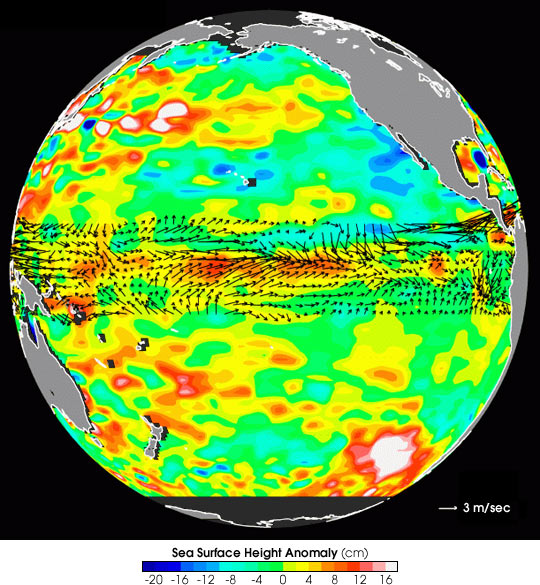


For the first two weeks in June, the surface winds and sea surface temperatures across the Pacific Ocean began to display an all-too-familiar pattern. Normally, the trade winds in the equatorial Pacific blow from east to west and push warm surface waters from the eastern Pacific westward. As is indicated by the arrows displaying wind speed and direction in the above Quick Scatterometer (QuikScat) satellite data, the trade winds stopped and in some cases reversed course across the equatorial Pacific in early June. Consequently, the waters in the eastern Pacific grew warmer than usual. If this trend continued or intensified, another El Niño would have settled in by fall 2002 and rainfall and atmospheric circulation patterns would have begun to change across North and South America. However, in the later half of June conditions returned to normal.
Scientists hope that satellite data from QuikScat will help them to study and even forecast future El Niño events. Launched aboard the SeaWinds satellite in 1999, the QuickScat instrument essentially sends out high frequency radio waves to detect the frothiness of ocean water. Since choppy ocean water is created almost solely by the surface winds blowing across the ocean, scientists can obtain an accurate measure of wind speed and direction from these data.
Image courtesy NASA JPL Air-Sea Interaction & Climate Team